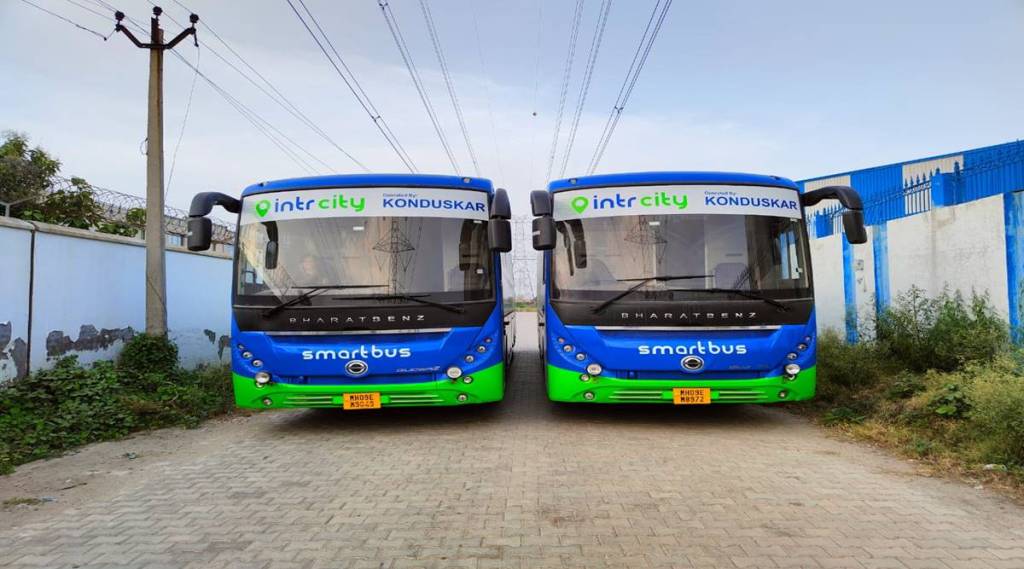By Manish Rathi,
In spite of the fact that intercity buses transport over 30 million people every day, the industry has yet to witness significant technological innovations. In the last decade, technology has changed the way people buy groceries and hire basic services like electricians and carpenters, but the intercity bus ride experience remained mostly the same. OTAs made internet booking easier in the previous decade, but the actual journey experience did not improve. Despite the near-ubiquitous reach of the internet and digital technology, most advances in ground transportation have been incremental until lately. However, this is set to change now with the recent emergence of technology-based platforms in the inter-city bus segment.
Ground transport for Bharat users is poised to transform
In the coming years, the national highway network will expand to 2 lakh kilometers, accelerating the segment’s growth as well as technological adoption. Connected vehicles, AI-powered technology, and IoT-based onboard devices are bridging the technological divide. The sector is finally on the cusp of some transformative changes. Even as these uber-tech technologies become a not-so-distant reality, a quieter revolution of its kind has been hitting closer to home that promises to change the face of ground transport for Bharat users.
This transformation has come in the form of SmartBus, which is making inter-city travel in India safer, more comfortable, and more predictable than it has ever been. Until recently, the only way a bus could stay linked to the operator once it departed its terminal was through the driver or, at best, a GPS gadget that tracked its trajectory. SmartBus is a paradigm shift because it captures all journey and vehicle data in real-time, processes it promptly, and suggests appropriate corrective measures. This is achieved with the help of a suite of applications, namely the Operator Dashboard, Crew App, Consumer Platform, and IoT-based Fleet Analytics. Deep technology has made it possible to have a more immersive networking experience that provides complete safety, reliability, and punctuality. By providing Bharat users with an alternative to the overcrowded railway, the SmartBus is revolutionizing intercity travel.
‘Connected Bus’ Ecosystem
The aptly named SmartBus is smart not only because of the smart features it contains (of which there are many), but also because the entire ecosystem is built on a mobility operating system that facilitates data collection, processing, and delivery through a variety of technology applications, which are listed below.
- An operator’s dashboard provides real-time journey statistics, vehicle performance, cost-cutting insights, and business insights.
- Similarly, the Crew app allows the crew to respond to consumers based on their demography, repeat behavior, and pre-informed requirements, as well as collect data relevant to their journey.
- The 24×7 command center dashboard helps track buses and take real-time corrective actions. This is backed by onboard devices pre-fitted on buses that power IoT-based fleet analytics.
- The consumer app allows consumers to make data-driven decisions (past performance of the bus, user reviews, ETA of buses) and manage their journey (pre-order food, live tracking, wake-up alarm).
Smart applications are driving smart decisions.
- These built-in, cutting-edge apps, such as the ones listed, allow users to take data, process it, develop insights, and make smart decisions.
- Track the bus in real-time using live CCTV footage, gather the temperature inside the bus, teach the driver how to regulate the ambient temperature, and guarantee that the driver adheres to a predetermined schedule.
- Consumer engagement, reviews, and feedback data are recorded and used for future custom improvements in experience and to offer bespoke services.
- The technology can record every bump in the road while also analyzing how road conditions affect speed and what physical components within the bus help passengers have a more comfortable journey.
- The data collected can include the number of scheduled and unscheduled stops made by a bus, with the latter receiving an alert; keeping track of fuel use; monitoring tire pressure; driver performance; and issuing fatigue alerts, among other things.
- By continuously monitoring traffic flows, speeds, and road conditions, the technology can provide pretty accurate ETA predictions, optimize route planning, and warn users ahead of time.
SmartBus is an integrated tech solution to enable safe, reliable, and punctual travel day in and day out.
Data-driven technology is increasing operational efficiencies for bus operators.
Years of data mined from aggregators of railway and bus passengers, information on routes, and user insights linked to overcrowded volumes and train stress can all be used to define route design in this segment. Consumer demand and seasonality data are also useful for route planning and expansion, among other things. It also enables operators to maintain dynamic pricing systems. With the use of these insights, bus operators can lower their operational expenses and better manage their vehicles.
There is reason to be optimistic about the future of intercity buses, given the abundance of enabling features and the deep tech potential. The day when deep tech-powered smart buses begin to make better decisions on their own is not far off. As a result, using the bus will undoubtedly be a pleasant, comfortable, and safe experience that will provide consistency across the country.
(The author is CEO and Co-Founder, IntrCity. Views expressed are personal and do not reflect the official position or policy of the Financial Express Online.)


